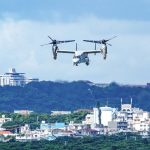
US’ planned display of warplane from collision with Chinese jet triggers social media outrage

The US' reported plan to put on display at an Arizona museum the reconnaissance plane that collided with a Chinese fighter jet in 2001, resulting in Chinese pilot Wang Wei sacrificing his life, has triggered outrage on Chinese social media platforms. Analysts also criticized the move as being an "unscrupulous act rubbing salt into the wound" that could further strain China-US relations.
A US Navy EP-3E Aries II has arrived at the Pima Air & Space Museum in Tucson, Arizona, for future public display, military news portal The War Zone reported on Wednesday, citing a social media post of the museum.
The museum's post said the EP-3E Aries II is packed with advanced technology for intelligence, surveillance and reconnaissance missions, and specifically referenced the collision in 2001 which it described as "globally publicized."
The warplane arrived at the location one day before, having been towed there from the boneyard at the nearby 309th Aerospace Maintenance and Regeneration Group in Tucson, according to The War Zone. The museum states that the Aries II is not yet ready for public display, but it will be a truly unique exhibit once that happens.
The news of the US' planned display of the warplane prompted heated discussions and criticism on Chinese social media platforms. A Weibo user wrote that "It is not 2001. Wake up! It's 2024!"
China in 2001 was not comparable to China today. The era of US bullying has come to an end, yet it still seeks solace in the annals of history, one net user said. "We are strong now. The US mistakenly thought that it can insult us like this again after 23 years!" another net user posted.
It seems that we need more aircraft carriers, DF41 and J-20s so that the deterrence can keep US troops far enough away, said a Weibo influencer with 7 million followers.
Li Haidong, a professor at China Foreign Affairs University, told the Global Times on Friday that the US has a culture of displaying military weapons, equipment, and facilities, which serve as a major tourist attraction across various cities and regions. Such a practice, with a primary goal to rake in ticket fees, will catalyze the bellicose nature of the country, Li noted.
However, the display of the EP-3E Aries II is totally different from other exhibits.
On April 1, 2001, the US military reconnaissance plane entered China's South China Sea airspace without authorization, and two Chinese military aircraft were dispatched to track and intercept the US warplane. In the process, PLA Navy pilot Wang Wei's J-8II fighter jet collided with the US plane above China's exclusive economic zone southeast of Hainan Island. Wang went missing and was later confirmed dead.
The damaged EP-3E Aries II executed an unauthorized emergency landing at the People's Liberation Army (PLA) Navy's Lingshui Airfield, according to information published by the US side. After diplomatic negotiations, the US crew was released, and the warplane was returned after being disassembled. The aircraft reportedly got reassembled and repaired in the US, eventually returning to service.
Chinese people saw the incident as a painful memory for the nation and the reported plan to display the US warplane at a sensitive moment when China-US relations are delicate and face uncertainties, is like "rubbing salt into the wound" and reflects an unfriendly stance by the US toward China, Li said.
Yang Xiyu, a senior research fellow at the China Institute of International Studies, said the biggest lesson that should be learned from the tragic collision in 2001 was that the US did not respect China. It cares only about US "security" without respect for China's security concerns, flying its warplane close to China's coastlines.
The planned exhibition should state clearly that the collision was at China's doorstep, not in the vicinity of any US territories, Yang noted.
Li said the complete disregard for China's sentiments reflects a lack of careful consideration for the stability of major power relations, and the rash nature in US foreign policy.
Citing the US' intensive military activities around China at the moment, including massive joint drills with allies and frequent reconnaissance missions, analysts urged the US to reflect on its handling of foreign affairs and China policy, as excessive self-centeredness will ultimately lead to more setbacks and risks conflicts that neither side wants to see.


